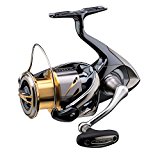Yellow Bass Habitat
focus on their prime feeding times, which is at night and that they move into the shallows when the temperature is between 59°F to 50°F.
Yellow Bass are often ignored in favour of the Largemouth Bass, Crappies and Bluegils. While the Bluegill and Crappie are not very large fish, they are known by many to have a great taste and they have a large distribution. The Crappie even has a commercial business, located in Tennessee.
The Yellow Bass is a fun fish to fish for due to their fighting ability and are very abundant in some waters, especially in Tennessee where the population supports a small commercial fishing company.
Yellow Bass fishing often occurs in large sluggish rivers, overflow water areas, sloughs, reservoirs and the oxbow lakes and large rivers. They are equally adapt in clear waters as they are in low turbidity waters. However, they do not care much for high turbidity conditions. They prefer river and lake beds consisting of sand, gravel and rubble along with silt and mud. Yellow bass prefer the open water and moves in large, loose feeding schools.
It’s preferred temperature range for adult yellow bass ranges from 54°F/12°C to 62°F/17°C during the winter months; from 82°F/28°C to 86°F/30°C in the summer months; from 82°F to 86F during daylight hours; from 81°F/27°C to 84°F/29°C at night; and their upper temperature range for survival is just over 89°F.
When the water temperature reaches 59°F/15°C in the fall, yellow bass move into the shallows. They begin to retreat out of the shallows when the temperature drop below 50°F/10°C and when the temperature drops below 39°F/4°C.
With all this temperature talk, just focus on their prime feeding times, which is at night and that they move into the shallows when the temperature is between 59°F to 50°F.


